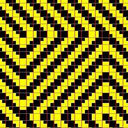High-dose glucose-insulin-potassium treatment reduces myocardial apoptosis in patients with acute myocardial infarction.
Parole chiave
Astratto
BACKGROUND
Several clinical trials have suggested that a metabolic cocktail of glucose-insulin-potassium (GIK) decreases mortality rates in patients with acute myocardial infarction (AMI). It has also been reported that Fas-mediated apoptosis plays an important role in ischaemic/reperfusion injury in the rat model. This study was designed to evaluate the interaction of ischaemic/reperfusion and reperfusion therapy coadministered with high-dose GIK treatment on soluble Fas/APO-1 (sFas) and Fas ligand (sFasL) plasma concentration in patients with AMI.
METHODS
Seventy-four patients presenting with AMI who underwent reperfusion therapy were randomized into a GIK group (n = 35) receiving high-dose GIK for 24 h or a vehicle group (n = 39). Thirty-four control subjects were also enrolled in the present study. Strepavidin-biotin ELISA was used to determine the soluble sFas and sFasL plasma concentration at baseline, 24 h (h), 3 day (d), 7 d and 14 d.
RESULTS
Soluble Fas and sFas-L serum concentrations ([sFas] and [sFas-L]) of patients with AMI were significantly elevated at baseline as compared with normal controls (NCs; P < 0.01 vs. NC). The sFas in the GIK and vehicle groups markedly decreased 24 h after the GIK infusion (10.7-->5.9 ng mL(-1) and 9.7-->6.5 ng mL(-1); P < 0.01 vs. baseline) and then increased during the 3-7-d period (5.9-->12.1 ng mL(-1) and 6.5-->11.1 ng mL(-1); P < 0.01 vs. 24 h). The GIK group demonstrated reduced sFas (12.1-->5.9 ng mL(-1)) at 14 d (P < 0.01 vs. 7 d), with no concomitant changes in the vehicle group. The sFas-L in the GIK and vehicle groups was not significant different during the 14-d period.
CONCLUSIONS
These results indicate that the sFas and sFasL in patients with AMI increased significantly compared with NC. Owing to the cardioprotective effects reported here and by others, a high-dose GIK infusion co-administered with the timely re-establishment of nutritive perfusion should be strongly considered as a treatment of choice for AMI. Additionally, sFas may be a valuable marker of the physiological response to ischaemic/reperfusion injury and reperfusion associated with high-dose GIK treatment.



